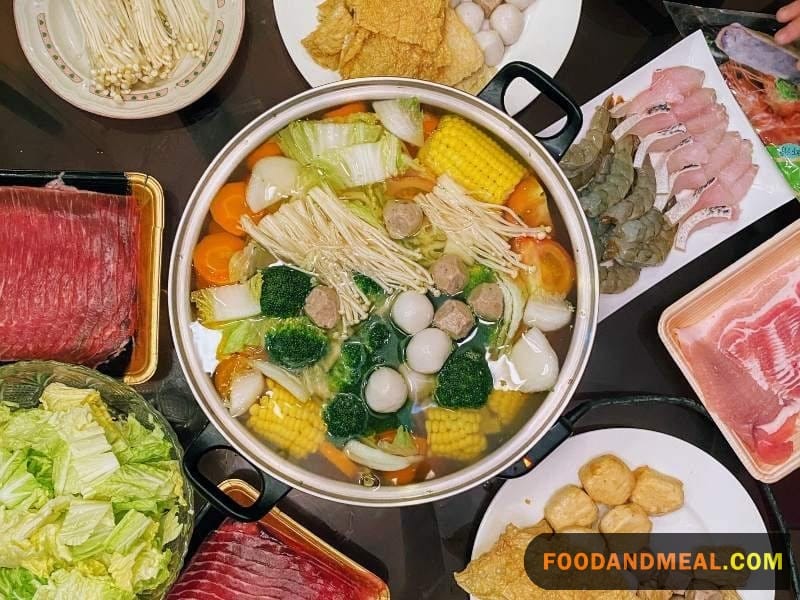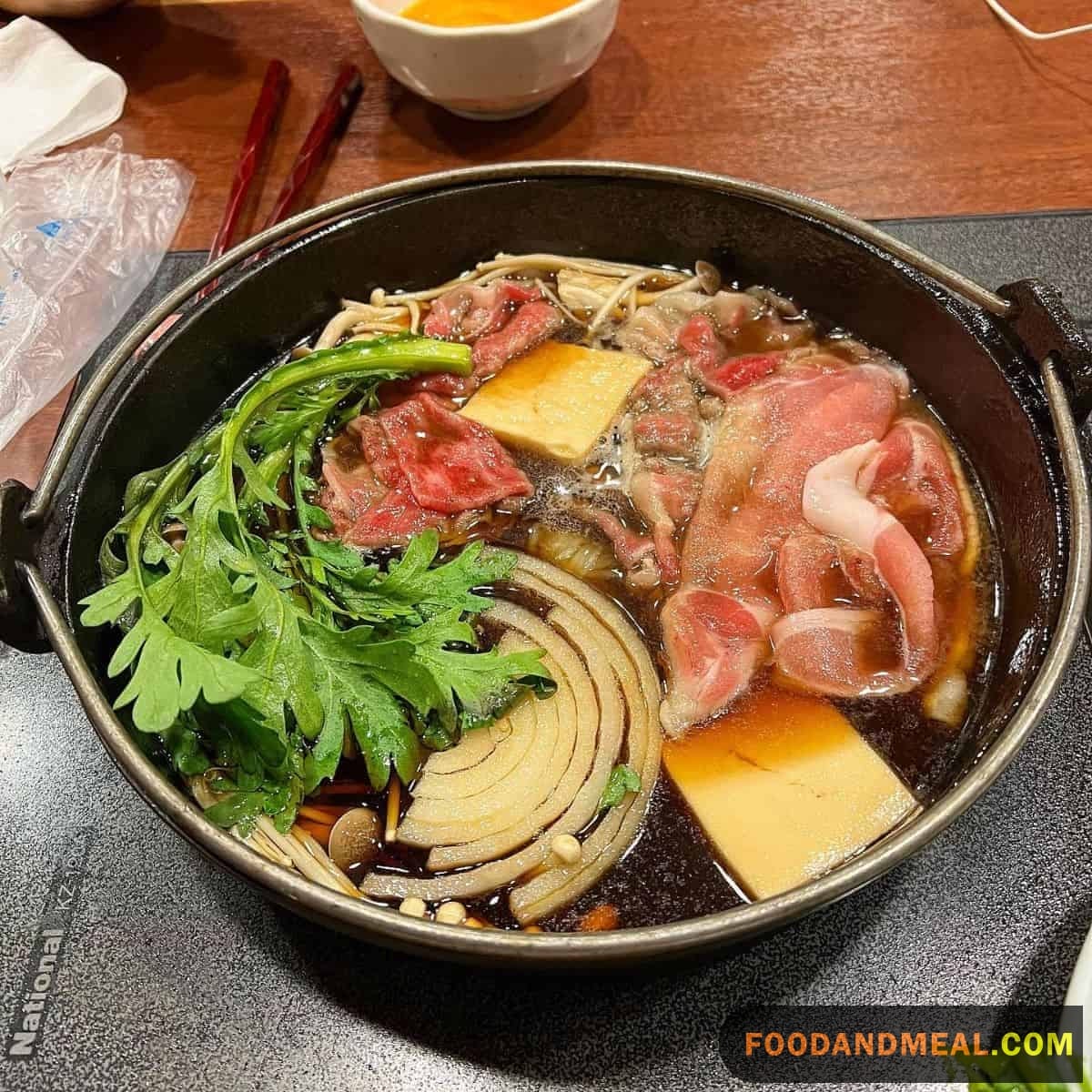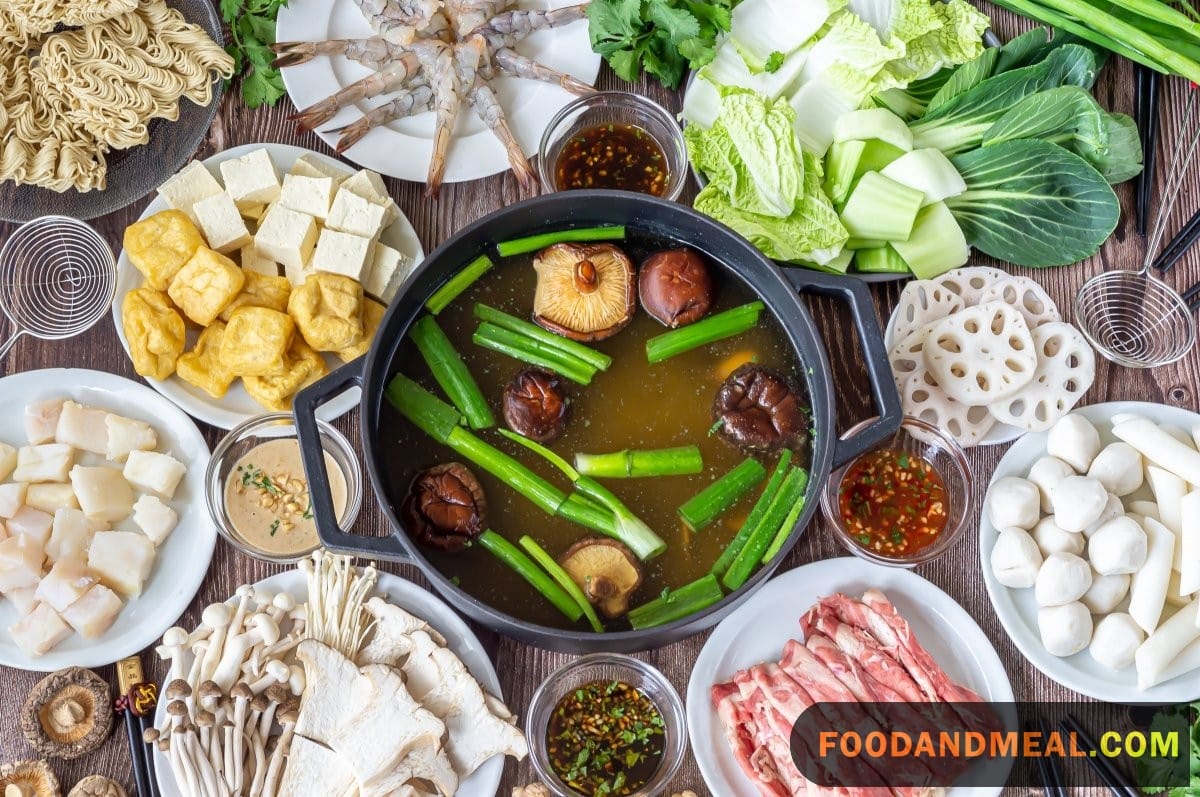This is Nazia, back to share a new spin on hot pot – a hearty veggie beef hot pot version perfect for the cold winter months. As a busy mom trying to feed my family wholesome, plant-based meals, I’m always looking for new ways to sneak extra vegetables into dinner.
After my daughter requested hot pot the other night, I thought why not try making it loaded with all her favorite veggies? We love the interactive, communal dining experience of East Asian hot pots, with everyone dipping ingredients into the simmering broth. By using vegetable broth as the base and adding in tofu ‘beef’ along with mushrooms, leafy greens, carrots and more, I crafted a satisfying meatless take on the classic.
My daughter was thrilled to pick and choose from a rainbow of ingredients to cook in the pot. And I love that this flexible recipe allows me to clear out the fridge while making a complete one-pot meal. The miso-infused broth has so much rich umami flavor, we didn’t miss the meat at all! I hope your family enjoys this veggie beef hot pot as much as we do – it’s become a new weekly tradition in our home.”

Veggie Beef Hot Pot Recipe

Japanese Veggie Beef Hot Pot
Ingredients
For hot pot
- 4 ounces noodles
- Water, filtered
- 2 tablespoons oil, vegetable
- 1 pound beef
- 1 onion
- 1 cup mushrooms
- 2 carrots
- 2 celery stalks
- 5 green onions
- 9 ounces cubed tofu
Instructions
- Press tofu till it is about 2/3 of its original thickness.
- Set oven to broiler. Line baking sheet with foil, then spray using non-stick spray. Spray tofu, too. Place tofu on baking sheet.
- Broil for 8-10 minutes on center oven rack. Flip. Broil for eight more minutes. Allow to cool and cut into 16 x one-inch cubes.
- To prepare sauce, mix sauce ingredients together in medium bowl. Adjust as you desire and set the sauce aside.
- Soak noodles for a minute in heat-proof bowl of boiling water. Drain. Rinse under cold water. Cut in halves.
- Add water with a bit of oil to table top burner on dinner table. Provide family and friends with chopsticks, skewers or small strainers. Allow them to cook their own tofu, beef and veggies in hot broth and enjoy dipping them in sauce.
Notes
Nutrition
© Food And Meal
This website provides approximate nutrition information for convenience and as a courtesy only. Nutrition data is gathered primarily from the Spoonacular Database, whenever available, or otherwise other online calculators.
Preparing Veggie Beef Hot Pot using a Slow Cooker
In the art of crafting a flavorful hot pot experience, thorough ingredient preparation is key. From washing, cutting, and slicing ingredients to pre-softening noodles, every detail is considered. The journey continues in a skillet where onions, mushrooms, and scallions are sautéed to perfection, creating a savory foundation.
Transitioning to the hot pot, a delightful mix of sugar, sake, mirin, and soy sauce simmers to form a captivating base. Positioned at the center of the table, surrounded by an array of prepared ingredients, the hot pot becomes the focal point of a communal dining experience.
Individual bowls, skewers, and ladles are provided, inviting diners to actively participate in crafting their own hot pot soups at the table. This interactive approach adds a creative touch to the meal, turning it into a shared and engaging culinary adventure.
In this shared warmth, diners become both chefs and appreciators, elevating the meal beyond mere sustenance. The hot pot experience transforms into a memorable journey, creating moments of connection and enjoyment among friends or family.
Cooking Tips

First, be sure to squeeze out as much moisture as possible from the tofu before adding it to the pot. This helps the tofu cubes develop a nice sear and absorb more broth as they simmer. I like to wrap my tofu in a clean kitchen towel and press gently to remove excess water.
Next, resist the urge to overcrowd the pot. Adding too many ingredients at once brings down the temperature too much. I usually add the veggies in batches for even cooking.
One trick I love is to ladle some piping hot broth over the spinach at the end to gently wilt it. The vibrant green looks so fresh against the other ingredients.
Finally, taste and adjust seasoning as needed at the end. Depending on your broth, you may want a splash more soy sauce or sesame oil to really make the flavors pop. This flexible one-pot meal really allows me to customize it to our tastebuds.
Serving Suggestions

This hearty veggie beef hot pot would pair nicely with some lighter, fresh tasting sides to balance the rich broth. The Thai chicken pad Thai or cold ramen noodles would allow the various textures of the hot pot ingredients to shine while complementing the Asian-inspired flavors. For additional crunch, the radish hash browns or air fried sweet and sour tofu make tasty accompaniments.
If looking for a lighter follow up, the refreshing pineapple or blueberry ice cream hits the spot. Their sweet, tangy notes contrast the savory umami broth. For those wanting to add a salad, the parmesan radicchio or vegan Japanese spinach salad offers a fresh, verdant crunch. Their bright vinaigrettes cut through the richness beautifully.
FAQs of Veggie Beef Hot Pot

- Can I use chicken instead of beef? Absolutely! Chicken, especially thigh pieces, can be a great substitute for beef. Just adjust the cooking time as chicken cooks faster than beef.
- What if I don’t have some of the suggested vegetables? The beauty of the hot pot lies in its versatility. Feel free to substitute with whatever you have on hand or prefer, like zucchini, kale, or broccoli.
- How spicy is the broth? While traditional Veggie Beef Hot Pot has a mild flavor, you can adjust the spiciness to your liking. Add more chili or a dollop of spicy paste if you like the heat.
- How long can I store the leftovers? Store any leftovers in an airtight container in the refrigerator for up to 2 days. When reheating, ensure it reaches a boil to ensure safety.
- Can I prepare the broth in advance? Yes, preparing the broth a day in advance can enhance its flavors. Store it in the fridge and reheat when ready to use.
Conclusion
In conclusion, this tofu beef hot pot is the perfect meal for chilly evenings when you crave something comforting yet light. The method combines the easy convenience of the Instant Pot with the classic hot pot experience of slowly simmered, tender beef and tofu.
As a busy mom, I love that I can make this nourishing dinner without spending hours in the kitchen. The adaptability of ingredients also allows me to accommodate my family’s dietary needs. While my version uses mushroom broth for a vegan dish, feel free to substitute bone broth if you can tolerate some dairy.
Head over to Food And Meal for full recipe details as well as tips on prepping the ingredients and timing the simple cooking steps. This cozy, customized hot pot is sure to warm you up on cold days! Let me know how it goes when you make it yourself.
Hi! I'm Nazia of ‘Nazia Cooks’, a self-taught baker and cook residing in Chennai. Rooted in the rich South Indian culinary landscape, my palate has expanded to embrace global flavors. I revel in crafting fusion dishes, melding traditions to birth unique tastes.



